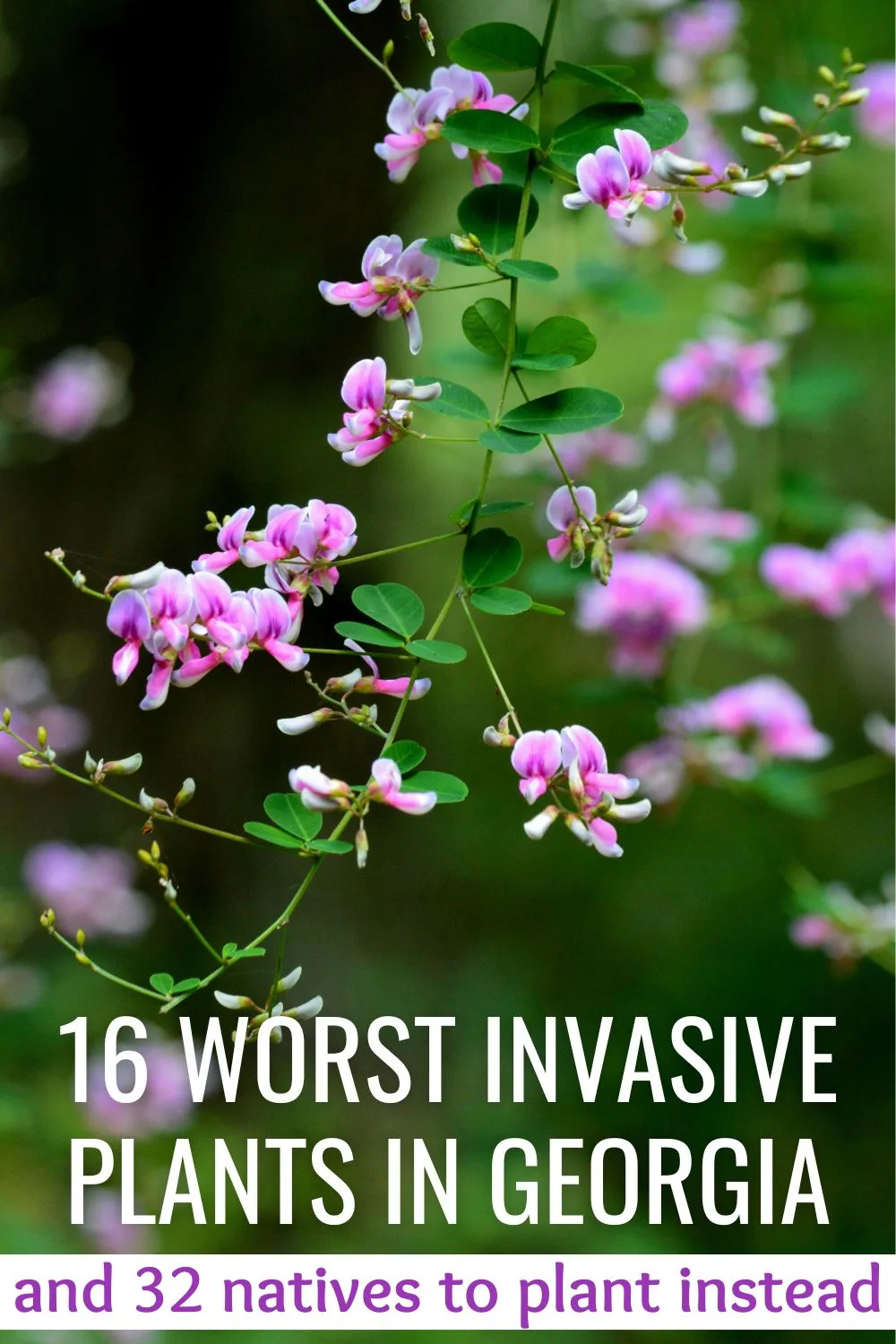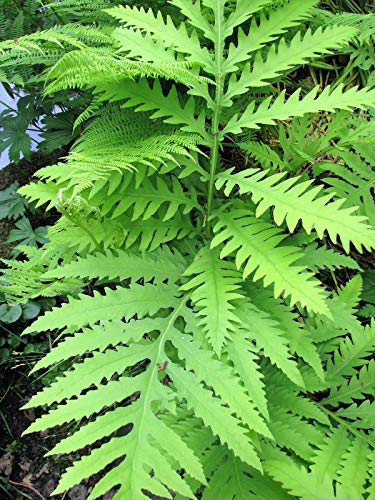Georgia ranks seventh among the states for plant diversity. Unfortunately, it also has the fourth-highest extinction rate (plants and animals). While habitat destruction is the leading cause for loss of biodiversity, invasive species follow right on its heels. Invasive plants outcompete, spread diseases to, parasitize, and negatively alter the habitat of native plants. This in turn affects the wildlife that depends on native vegetation to thrive and even has negative economic impacts.
The good news? Individuals can play a role in curbing the spread of invasive plants in Georgia and nurturing native species instead. Learn to identify some of the worst of these nonnative weeds in your state, so that if you discover them in your garden or outdoor space, you can properly remove them. The list below includes similar native alternatives to each invasive plant for beautifying your yard and helping the environment all at once.
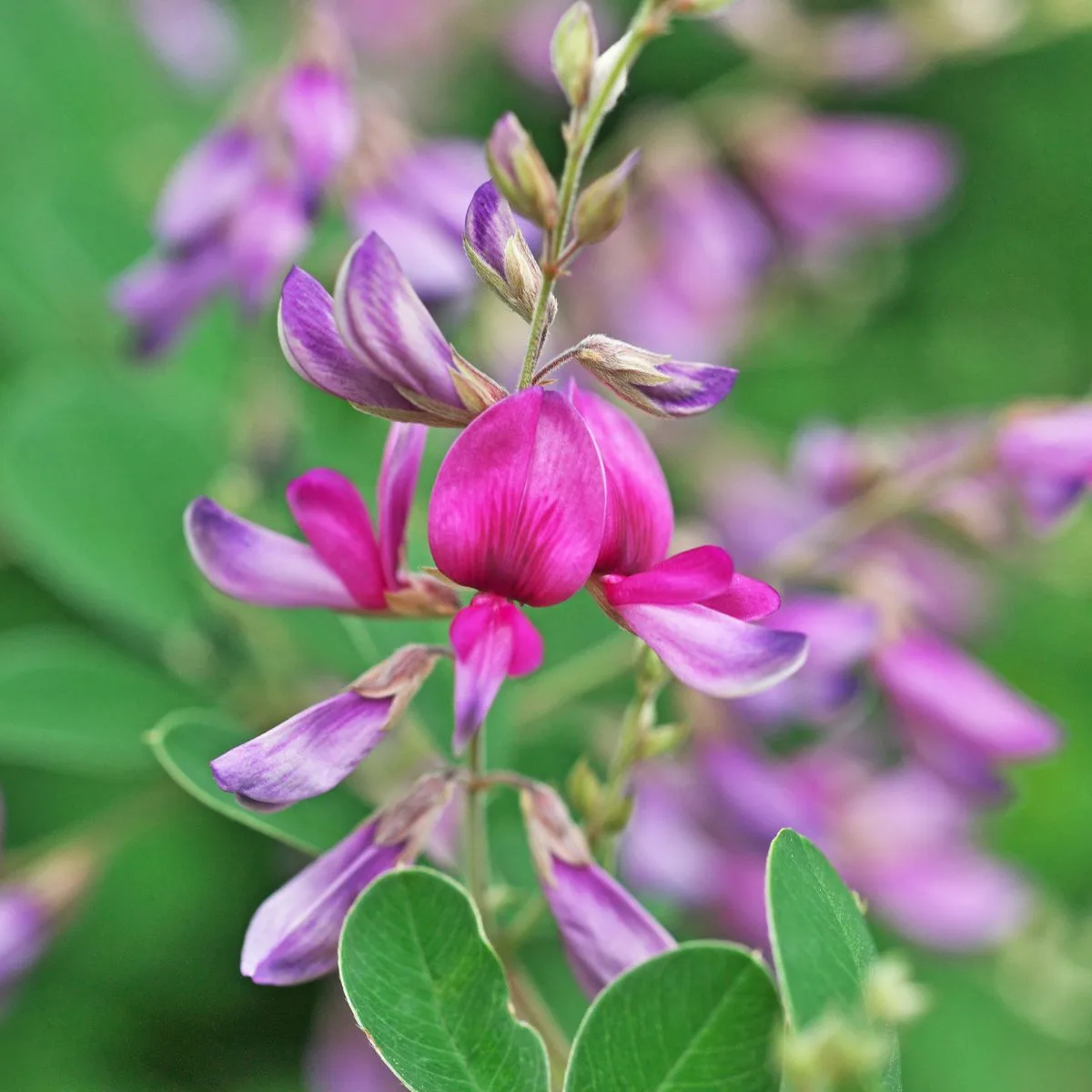
Invasive Plants in Georgia
1. Autumn olive (Elaeagnus umbellata)
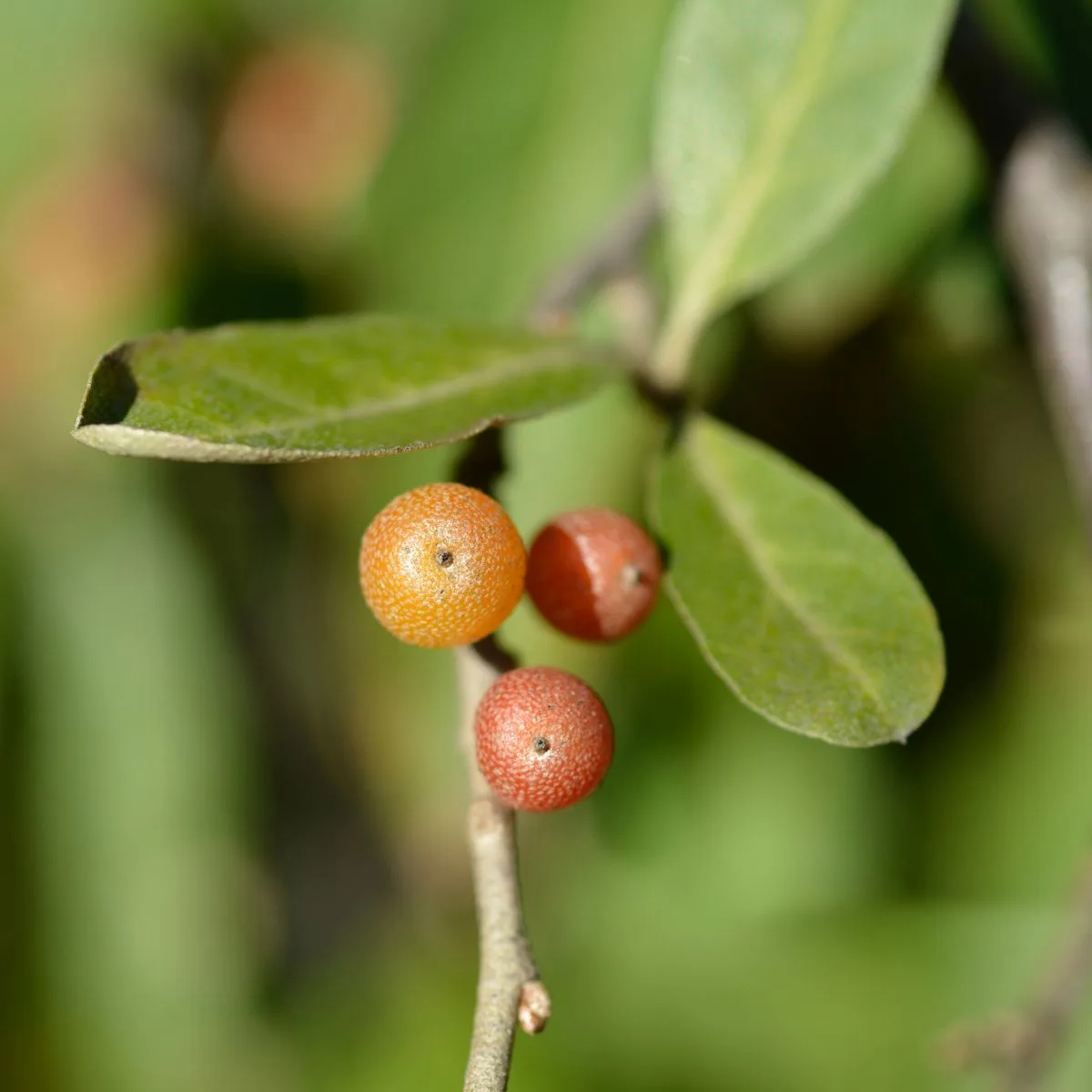
This deciduous shrub has smooth, grayish brown bark with tiny white dots and sometimes a few thorns. The alternate, elliptical leaves have silvery undersides and average two to three inches long. Inconspicuous flowers precede red berries.
Use a foliar or basal herbicide application to kill autumn olive, or cut it and spray the stump.
Native shrubs with attractive berries include beautyberry (Callicarpa americana) and winterberry (Ilex verticillata).
2. Chinaberry tree (Melia azedarach)
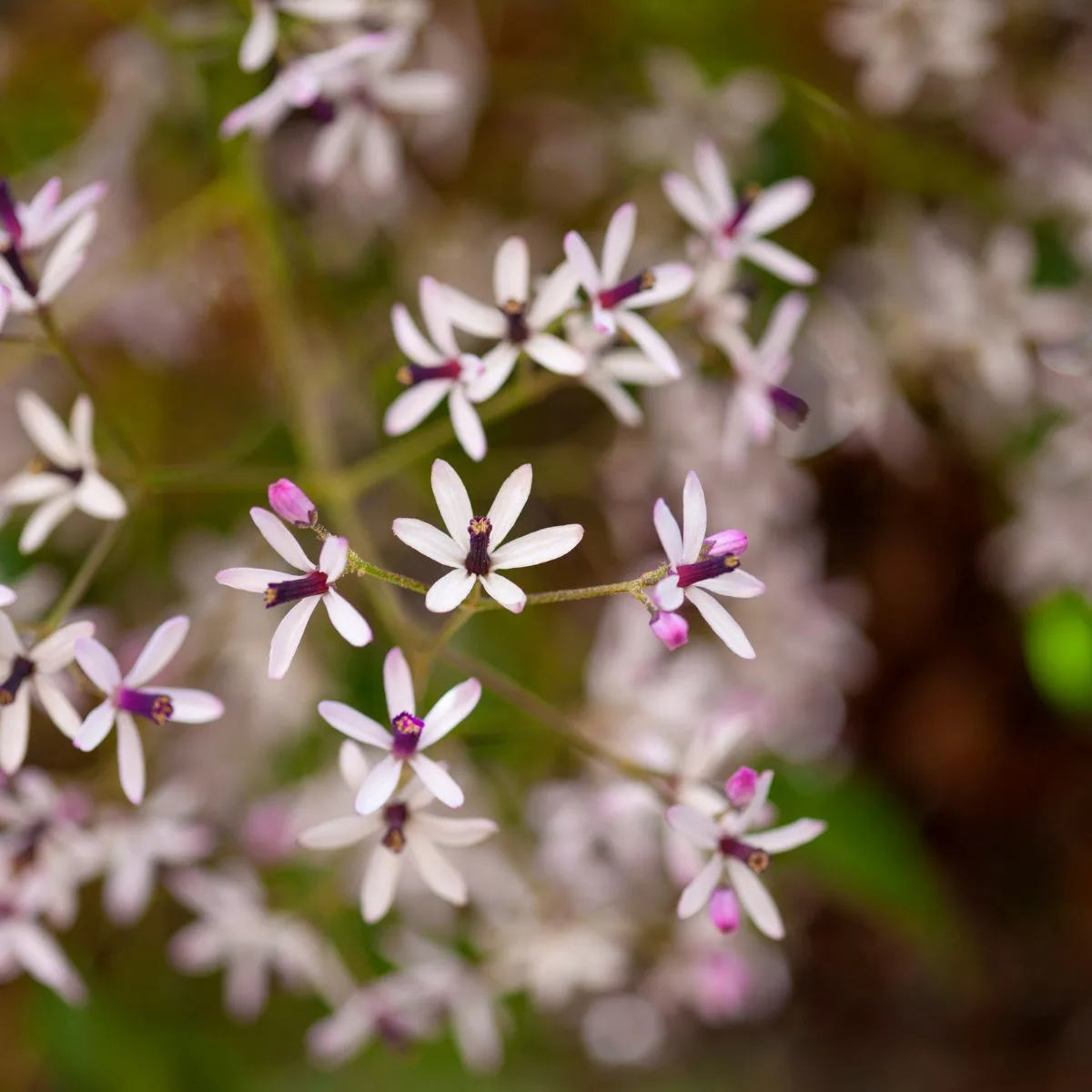
Up to 50 feet tall, chinaberry trees have alternate, bipinnately compound leaves with toothed, lance-shaped leaflets that turn yellow in autumn. Its lavender, five-petaled flowers are followed by yellowish berrylike fruits, which are poisonous.
Pull or use foliar spray on seedlings, use basal herbicide application on saplings, and cut large trees, treating the stumps with herbicide to prevent resprouting.
Serviceberry (Amelanchier arborea) is a very similar native tree, and American holly (Ilex opaca) also makes a good alternative.
3. Chinese and European privet (Ligustrum sinense and L. vulgare)
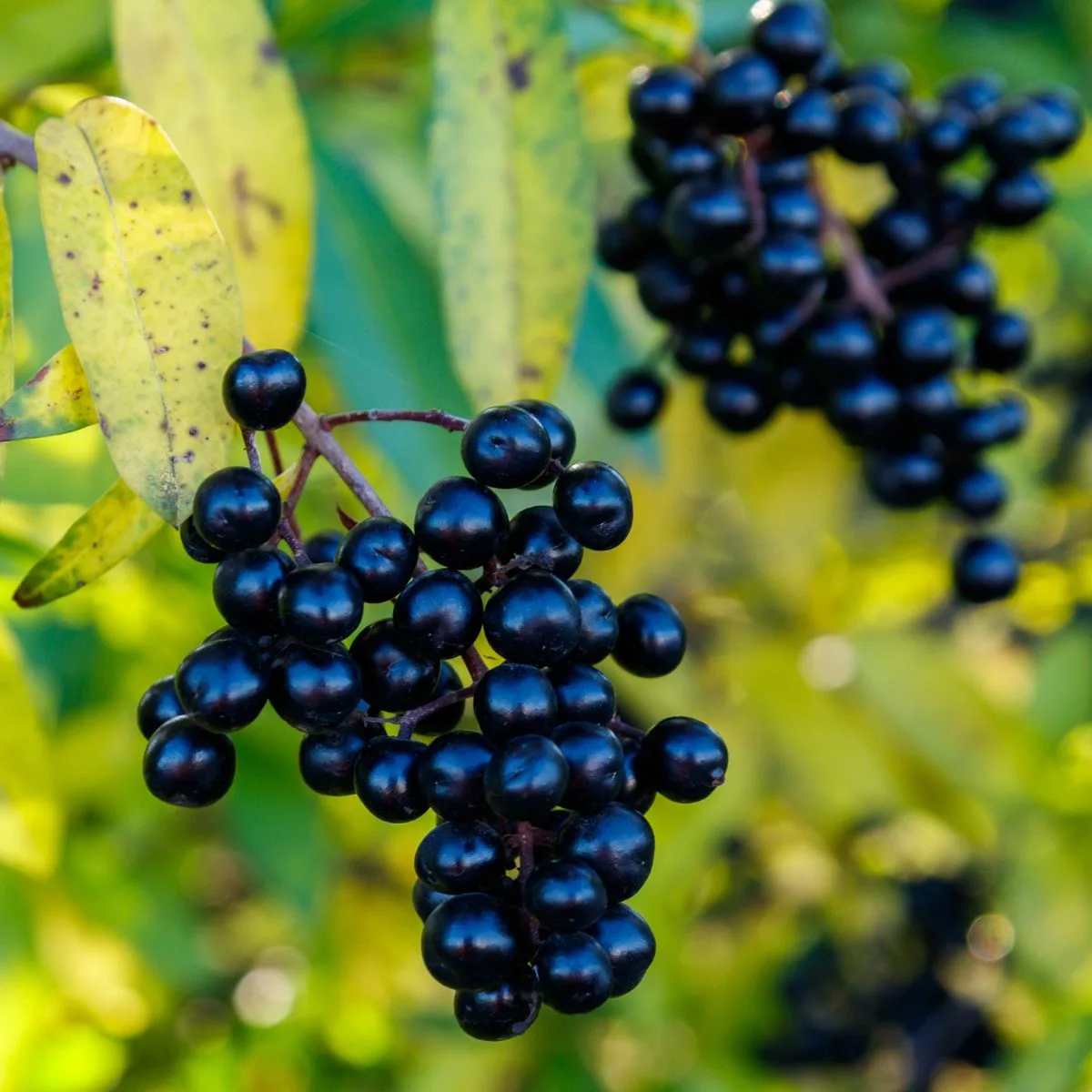
These semi-evergreen shrubs typically have multistemmed trunks and long branches covered in tiny, oval, opposite leaves. Clusters of tiny white flowers bloom at the ends of branches, followed by dark purple to black berries.
Careful use of foliar or basal herbicide, or cutting and applying herbicide to the stump, are the most effective control methods.
Native bottlebrush (Aesculus parviflora) produces even showier white flower spikes, and highbush blueberry (Vaccinium corymbosum) features blue, edible berries.
4. Chinese and Japanese wisteria (Wisteria sinensis and W. floribunda )
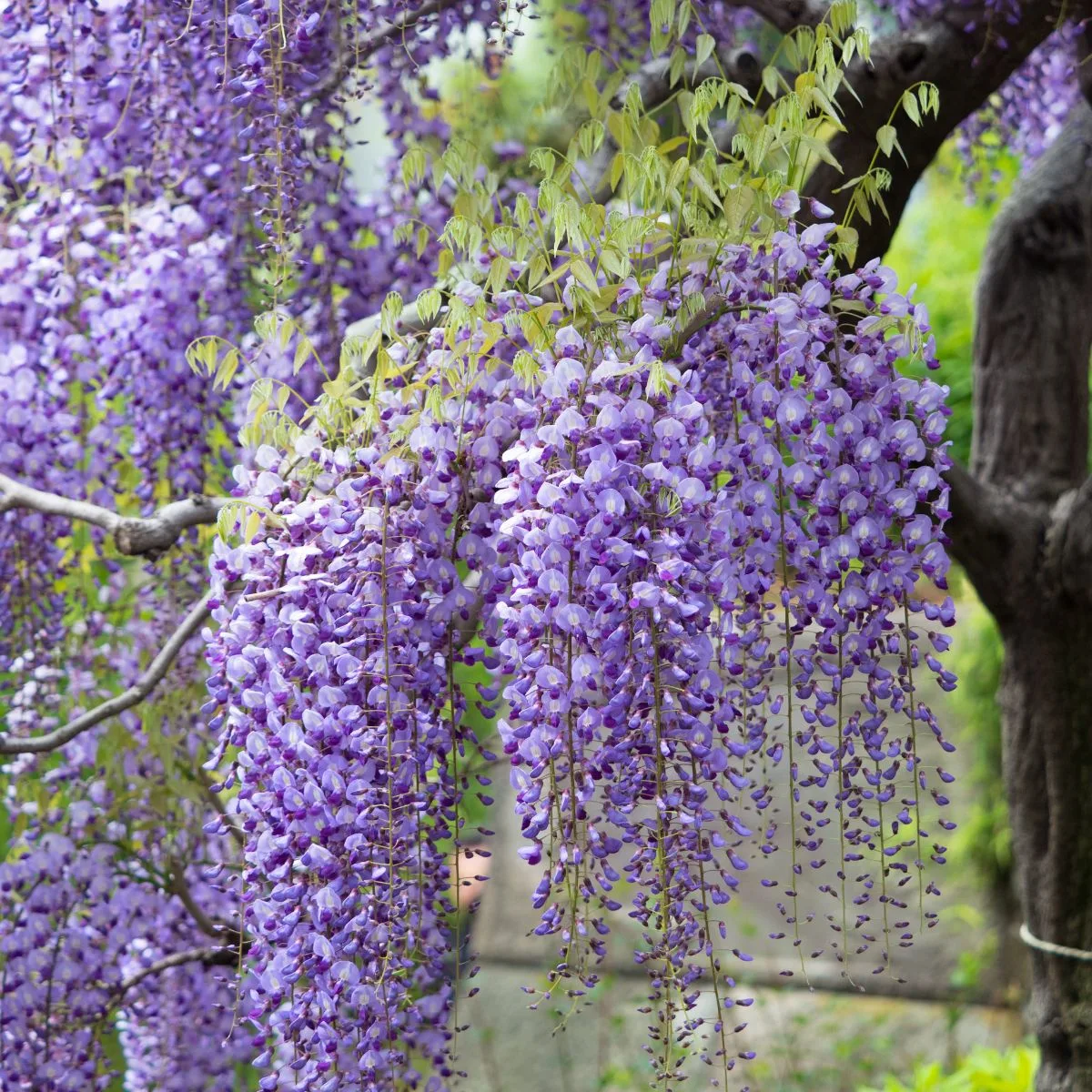
The very showy Chinese and Japanese wisteria produce large, drooping clusters of white to lavender flowers on their woody vines with pale bark. Flat, beanlike seed pods follow, and the alternate, pinnately compound leaves have tapered leaflets with wavy margins.
Use a foliar spray on small plants or cut large vines and apply herbicide to the stump.
Plant American wisteria (W. frutescens) instead, or a lovely native climbing hydrangea.
5. Cogongrass (Imperata cylindrica)
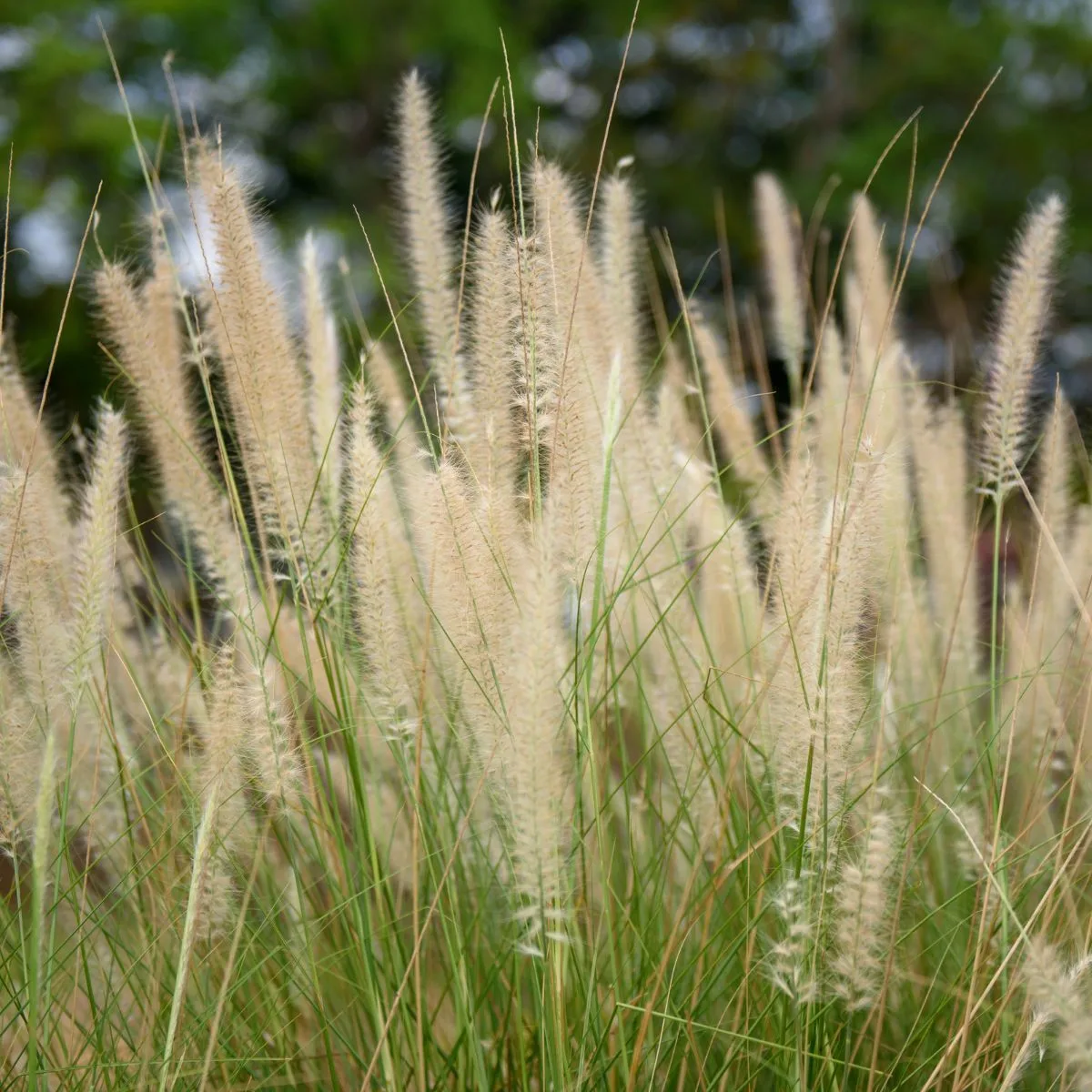
Cogongrass spreads via sharp, white, branched rhizomes and wind-dispersed seeds to form dense colonies. The leaves have rough edges and a pale, off-center midrib. In spring, a large, fuzzy panicle gives the plant a cottony appearance.
Report any occurrence of this federal noxious weed to your local Georgia Forestry Commission office, and carefully apply a foliar herbicide in September or October and again the following spring before flowering.
Attractive native grasses include switchgrass (Panicum virgatum) and Muhly grass (Muhlenbergia capillaris).
6. Japanese climbing fern (Lygodium japonicum)
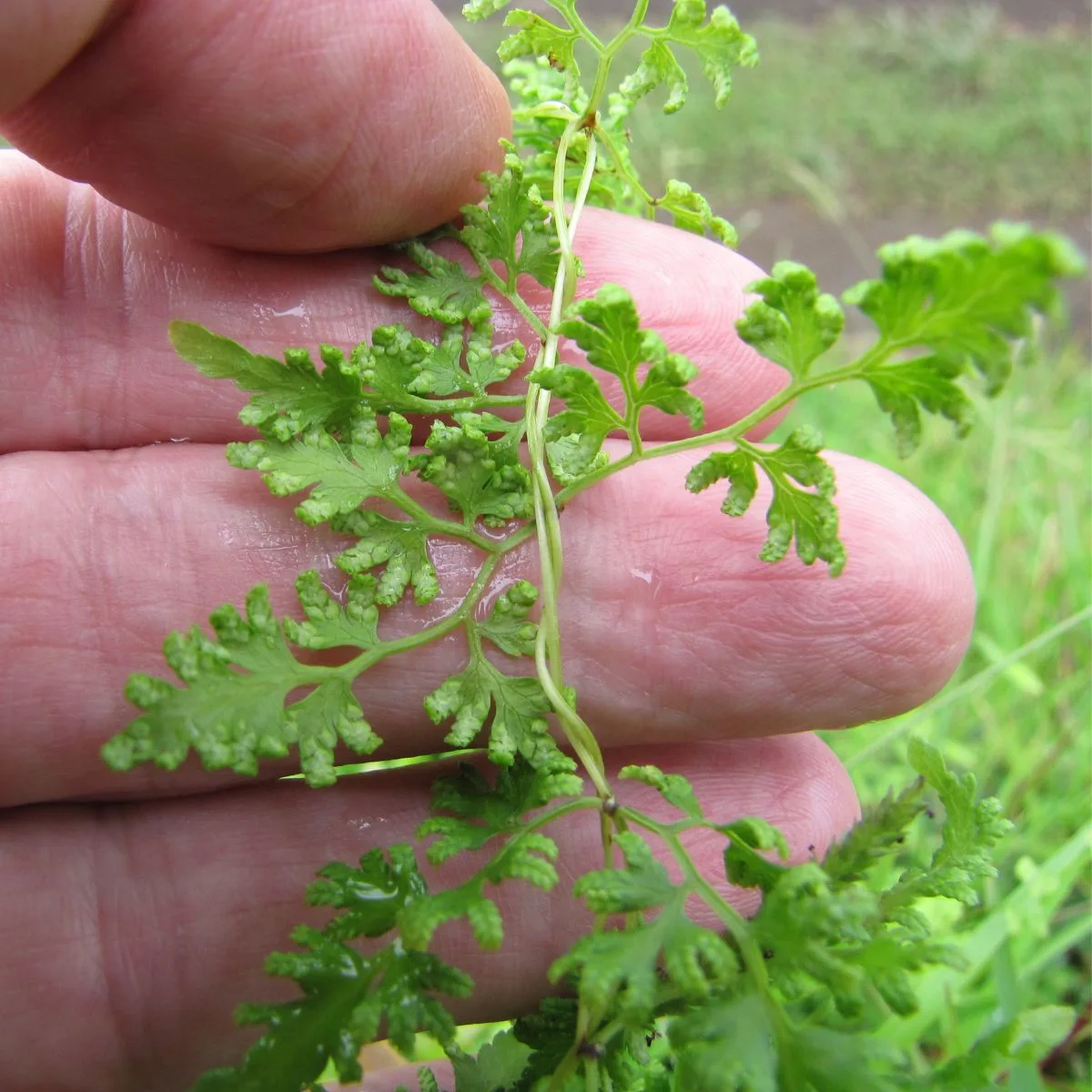
This unique fern has thin, wiry vines that can sprawl and climb 90 feet. The fronds are composed of finely dissected, opposite, compound leaflets. Spores occur under the edges of these triangular leaflets in double rows.
Pull small plants by hand, or carefully apply a foliar spray to control larger infestations of Japanese climbing fern without damaging surrounding vegetation.
Plant native ferns instead, like sensitive fern (Onoclea sensibilis), or a native vine such as peppervine (Ampelopsis arborea).
7. Japanese honeysuckle (Lonicera japonica)
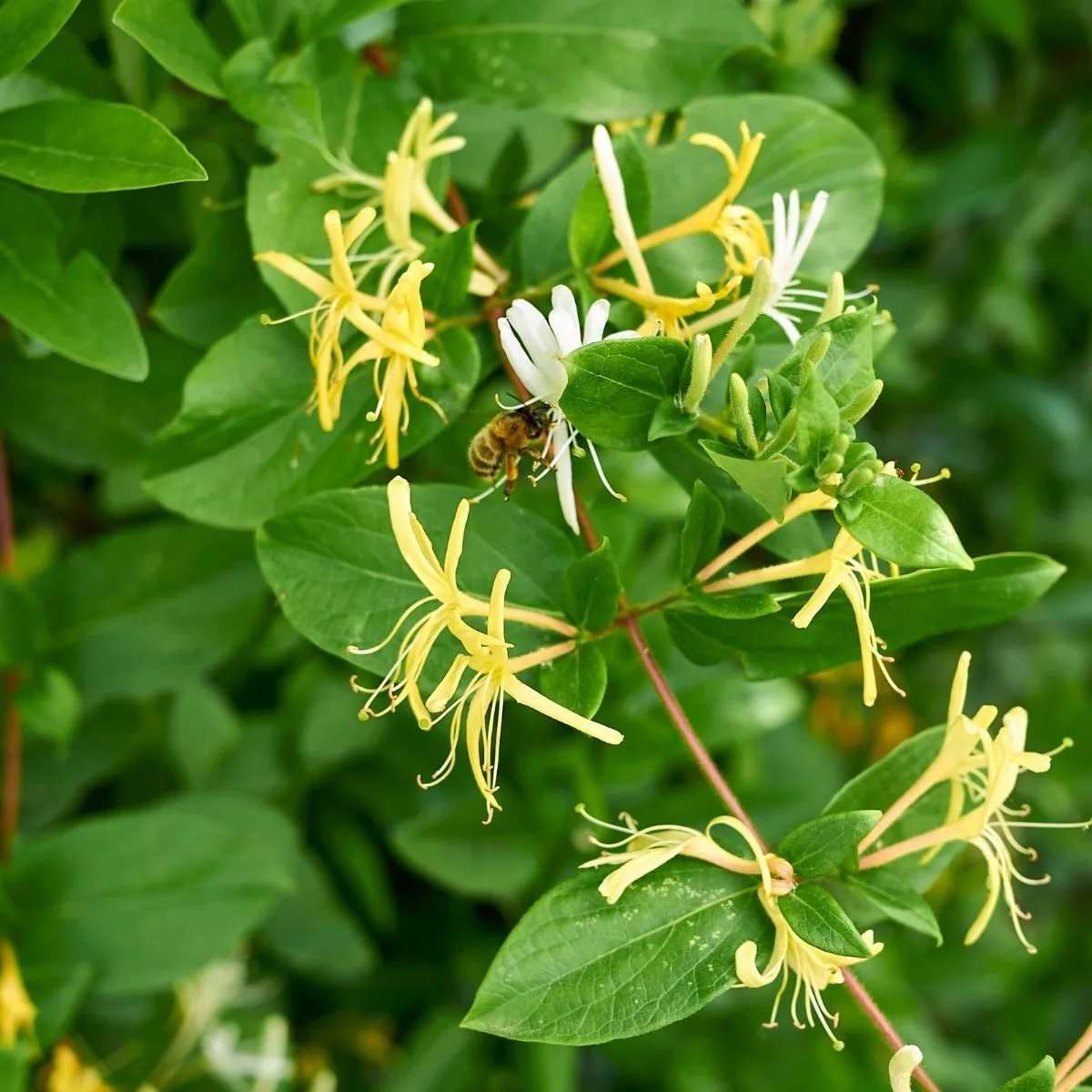
An evergreen or semi-evergreen vine, Japanese honeysuckle can climb or trail more than 80 feet, girdling small trees and shading out native vegetation. It has small, opposite, oval leaves and white or buttery yellow tubular flowers with a strong, sweet fragrance. The green berries that follow ripen to black.
Cut the vines and apply herbicide to the “stump” or use a foliar spray, taking care not to damage nearby plants.
Coral honeysuckle (Lonicera sempervirens) and trumpet creeper (Campsis radicans) are lovely native alternatives.
8. Kudzu (Pueraria montana)
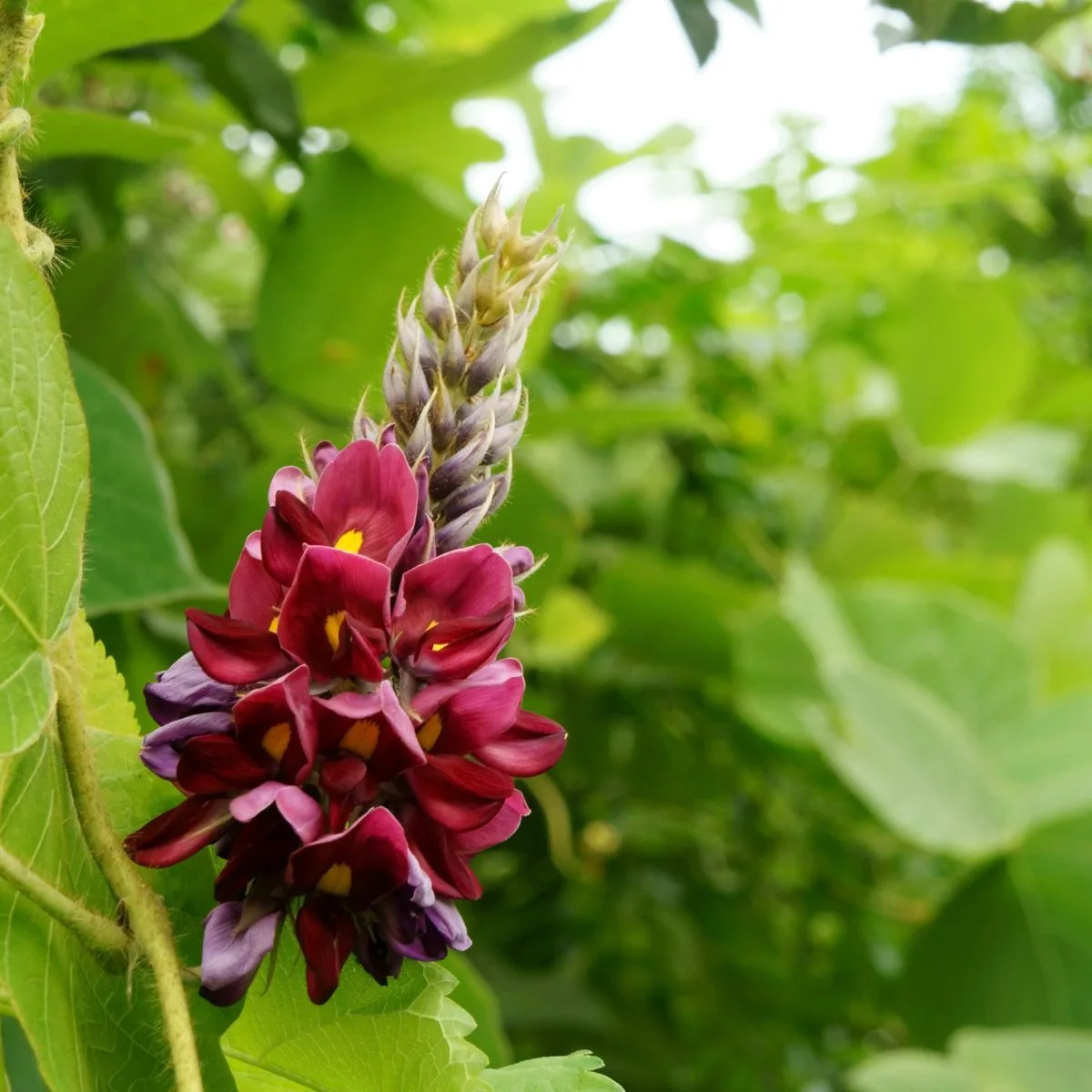
An aggressive deciduous vine, kudzu can grow 100 feet long or more, completely covering shrubs, trees, buildings, and other plants and structures. It can be identified by the large, dense mats it forms and by its leaves, each consisting of three broad leaflets as wide as four inches. It produces purple flowers in early summer.
Use basal or foliar spray or cut the vines at the base and apply herbicide to the cut surfaces.
Plant native vines like Virginia creeper (Parthenocissus quinquefolia) or beautiful climbing hydrangea (Decumaria barbara).
9. Mimosa (Albizia julibrissin)
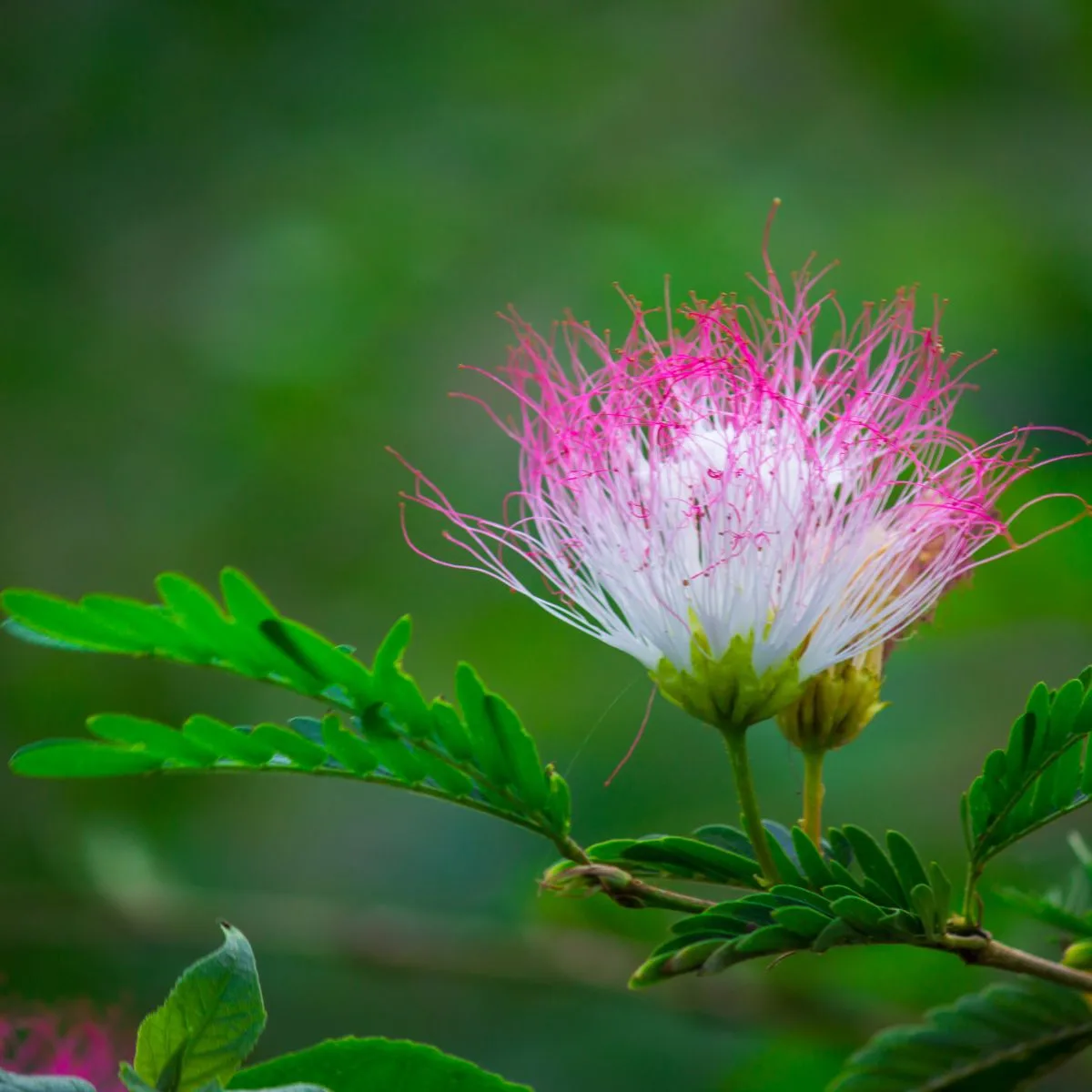
A small tree, mimosa typically grows 10 to 50 feet high, often with multiple trunks. It has ferny, bipinnately compound leaves and feathery pink flowers that perch atop the branches. Flat, pea-like seedpods follow.
To control, use herbicide injection, foliar spray, or basal spray, or cut the tree and apply herbicide to the stump.
Fringetree (Chionanthus virginicus) is a beautiful native alternative, as is the pagoda dogwood (Cornus alternifolia).
10. Multiflora rose (Rosa multiflora)
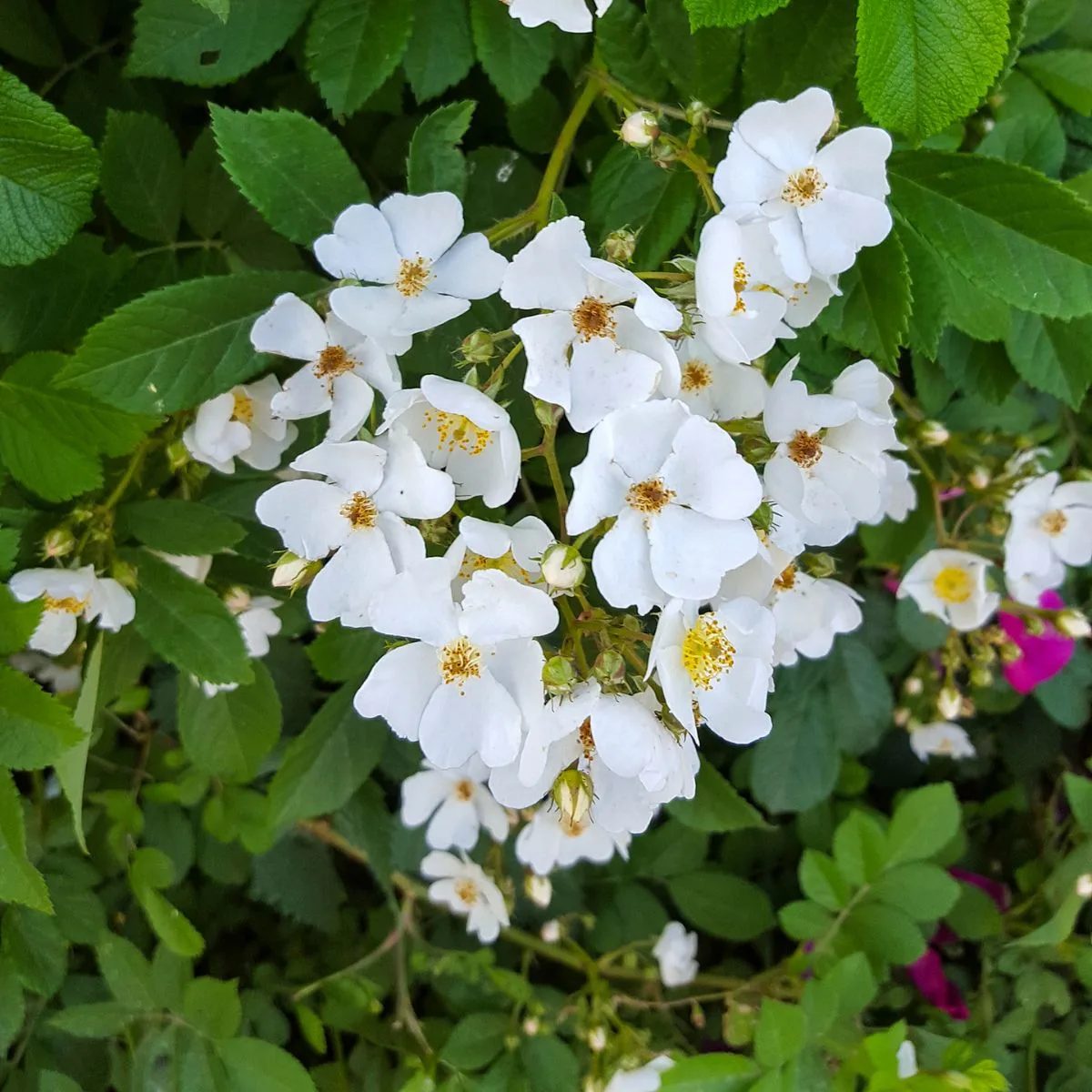
Multiflora rose produces clusters of small, white flowers and, later, bright red rose hips. This shrub has many sharp, curved thorns and is distinguished by a feathery fringe at each leaf base.
Control with a foliar or basal spray or cut the shrub and apply herbicide to the stump.
For native white flowering shrubs, plant smooth hydrangea (Hydrangea arborescens) or southern arrowwood (Viburnum dentatum).
11. Nepalese browntop (Microstegium vimineum)
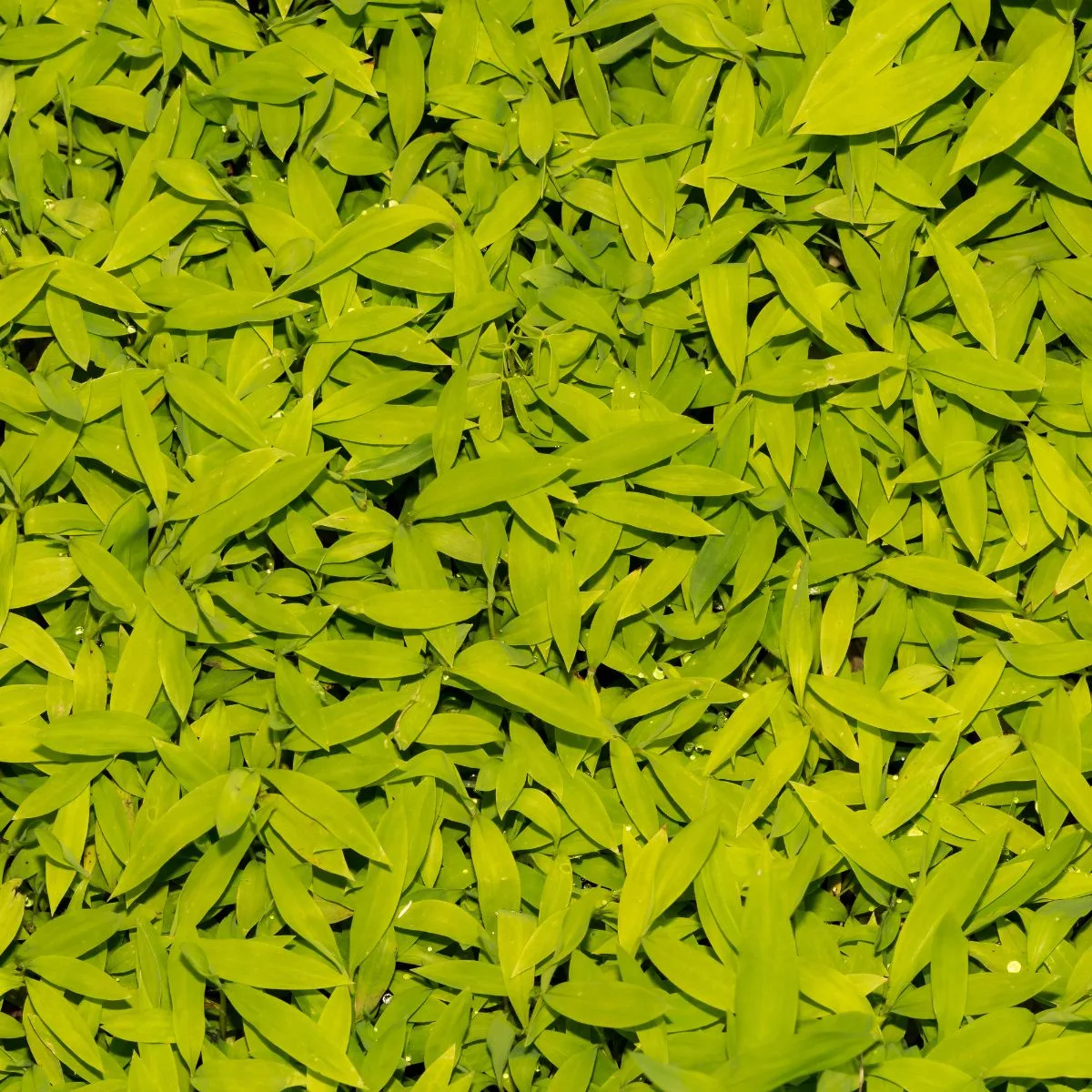
Nepalese browntop, also commonly called Japanese stiltgrass, is a sprawling grass up to three feet tall. Its alternate, lance-shaped leaves grow on branched stems. Because it has some very similar native lookalikes, look for a distinctive line of silvery hairs on the midrib.
Carefully apply foliar spray to control Nepalese browntop.
Plant native little bluestem (Schizachyrium scoparium) or sweetgrass (Muhlenbergia filipes) instead.
12. Shrubby and Chinese lespedeza (Lespedeza bicolor and L. cuneata)
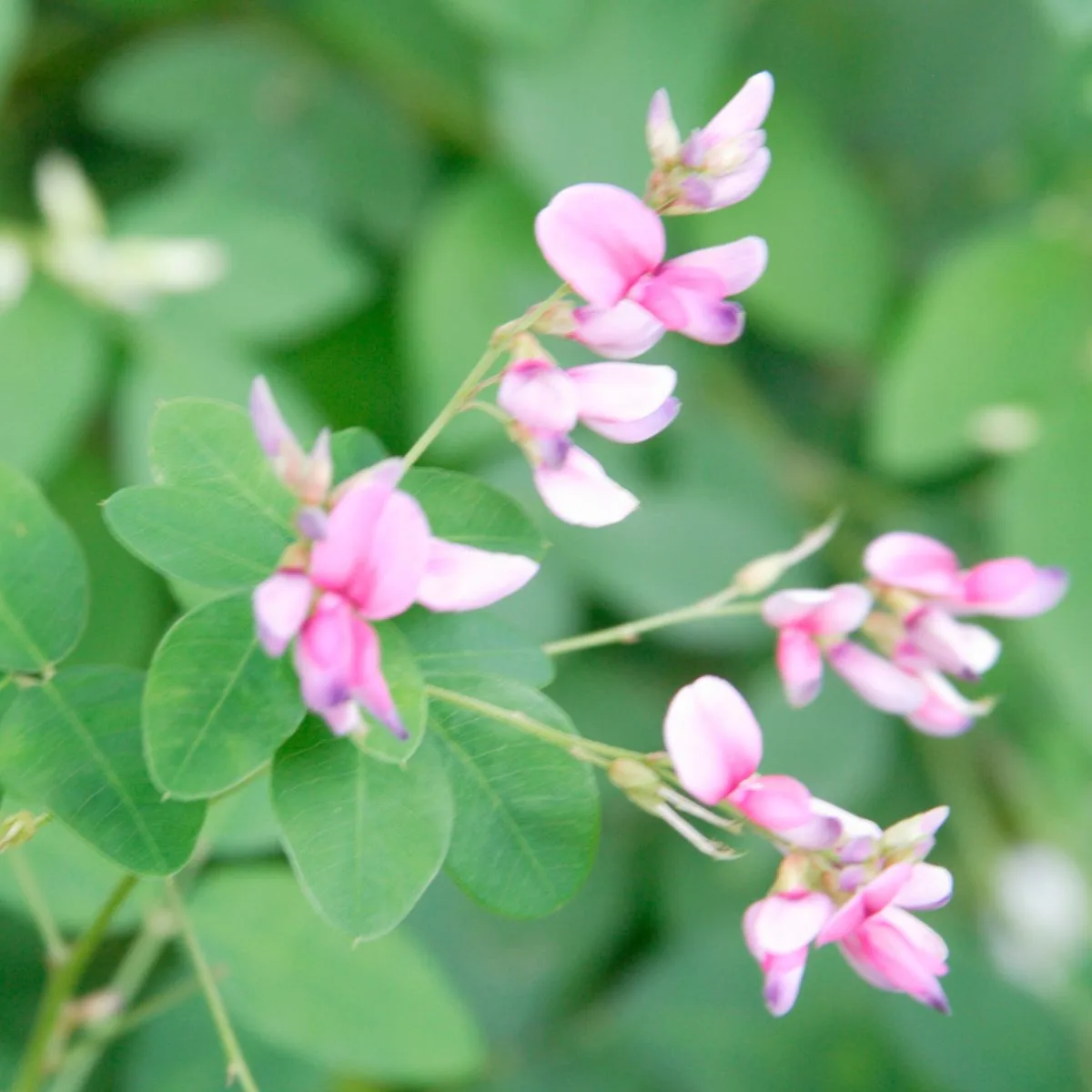
Shrubby and Chinese lespedeza are both upright, semiwoody forbs ranging from three to 10 feet tall. The small, alternate, three-parted leaves have elliptical leaflets up to two inches long. They produce purple (shrubby) or white to yellow (Chinese) flowers resembling pea blossoms.
To control, carefully apply foliar pesticide.
Similar native flowering perennials include white gaura (Gaura lindheimeri) and garden phlox (Phlox paniculata).
13. Tallow tree (Triadica sebifera)
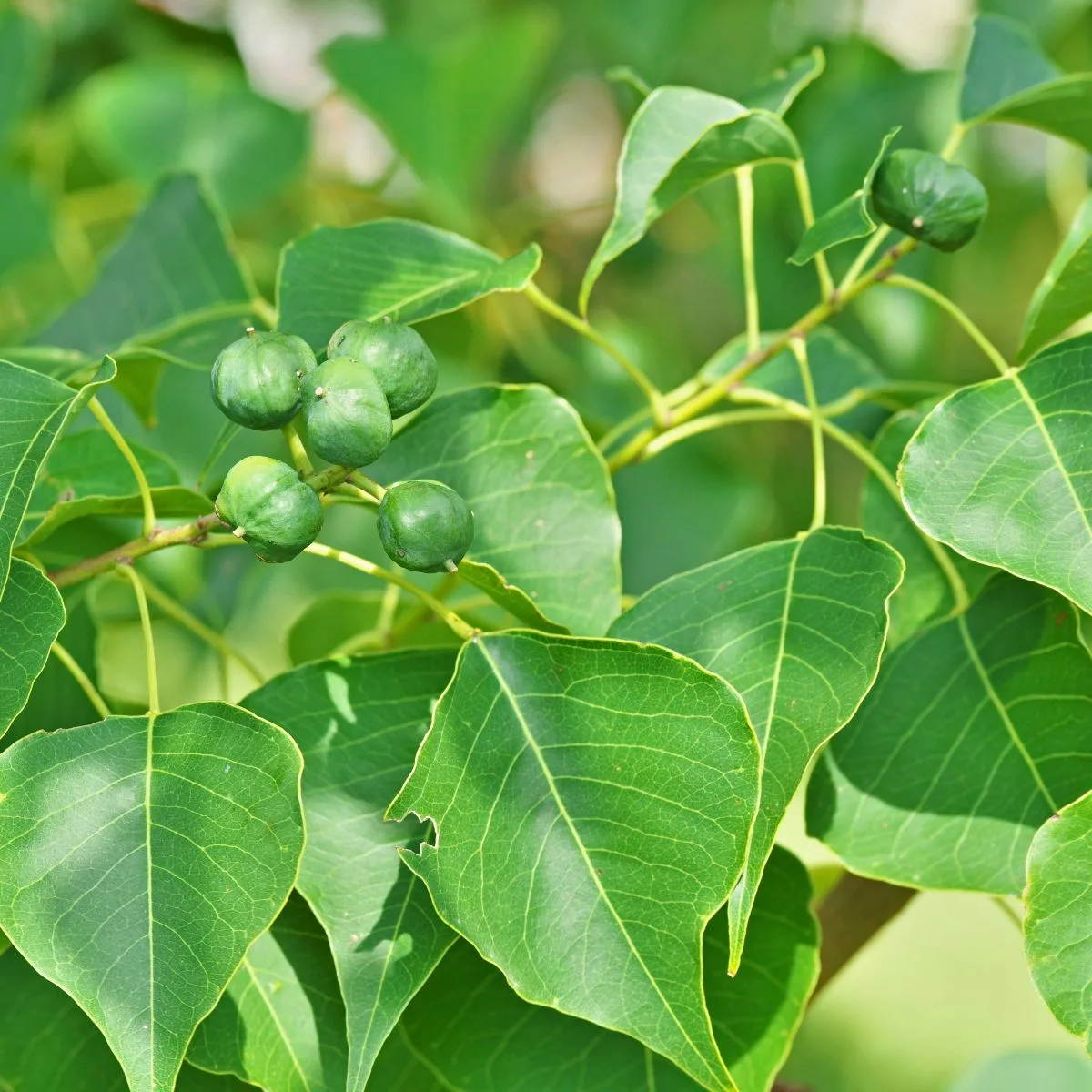
Tallow tree is also called popcorn tree due to its clumps of three white seeds, resembling popcorn, revealed after the black fruits split open. This deciduous tree grows up to 60 feet tall and has heart-shaped leaves with long, pointed tips. The tiny, yellowish male flowers bloom in dangling spikes.
Use foliar spray on seedlings, basal application on saplings, and stem injections on large trees, or cut and apply herbicide to the stump.
Eastern redbud (Cercis canadensis) is a lovely small native tree with heart-shaped leaves, and red maple (Acer rubrum) grows to a similar height as tallow tree, with beautiful fall color.
14. Tree of heaven (Ailanthus altissima)
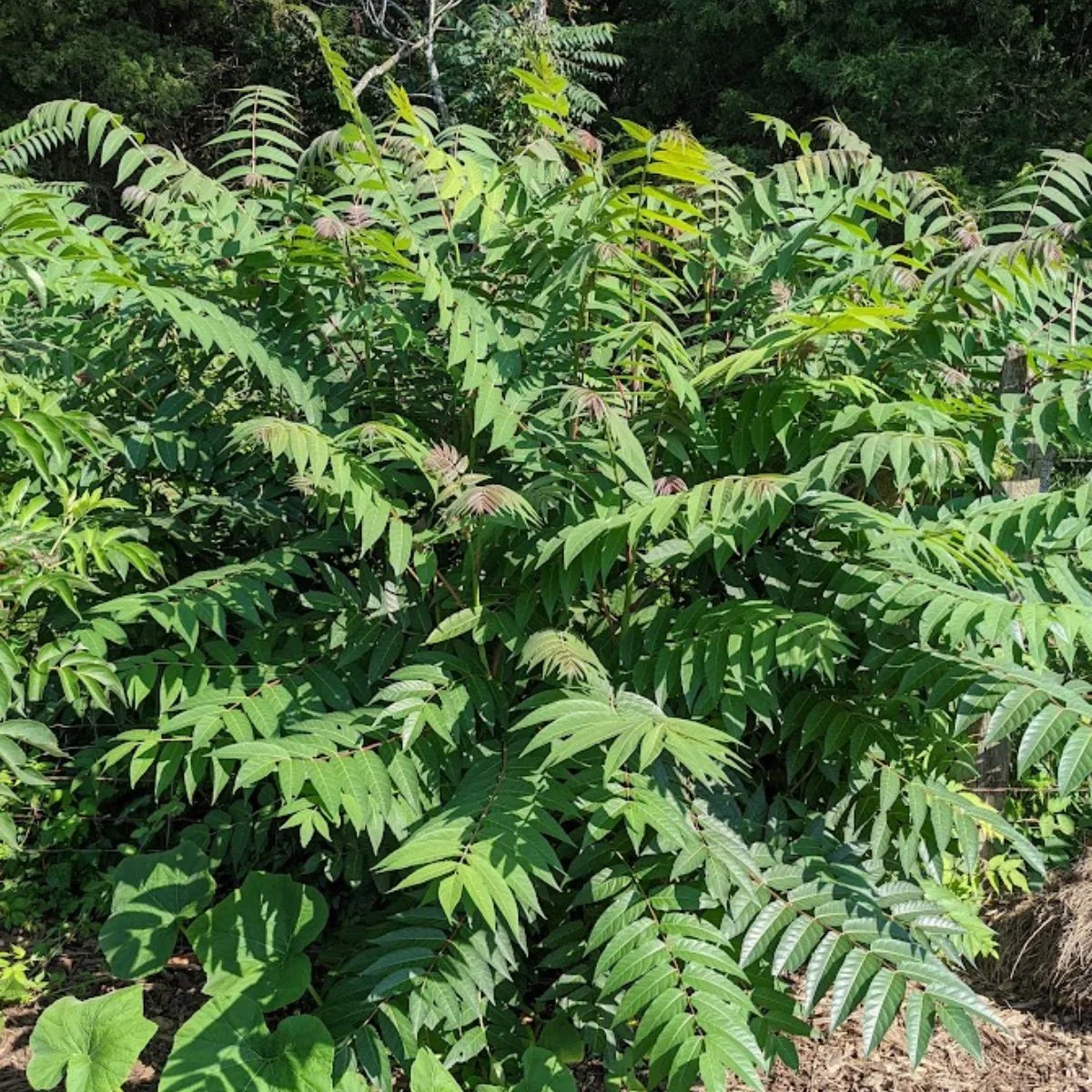
This small deciduous tree grows rapidly and spreads aggressively via sprouts as well as winged seeds. Its pinnately compound leaves have 10 to 41 lance-shaped leaflets, each with a glandular, notched base. It gives off a pungent odor when any part is scratched or crushed.
Inject large trees with herbicide or cut and apply herbicide to the stump. Apply foliar spray to seedlings and basal spray to saplings.
Native hickories and sumacs are similar, such as the pignut hickory (Carya glabra) or smooth sumac (Rhus glabra).
15. Tropical soda apple (Solanum viarum)
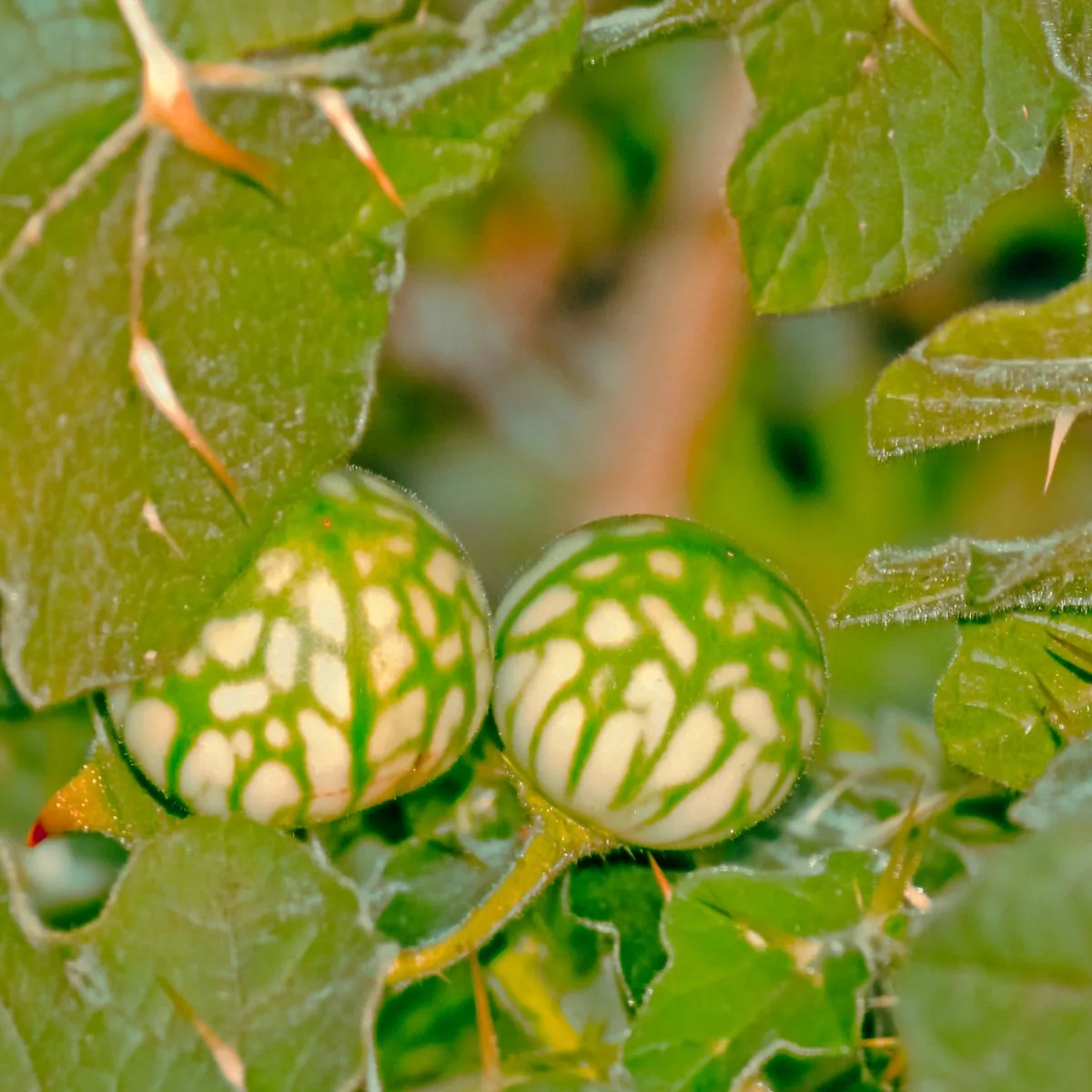
A perennial forb, tropical soda apple grows up to six feet high with a bushy habit. It has broad, oak-like leaves and thorns. Most notably, it produces small, round fruits resembling a berry-sized watermelon until they ripen to yellow.
Pull small plants while wearing sturdy gloves, or carefully apply a foliar herbicide.
Plant a small native shrub like dwarf fothergilla (Fothergilla gardenii) or one with similar foliage, like mapleleaf viburnum (Viburnum acerifolium).
16. Tropical spiderwort (Commelina benghalensis)
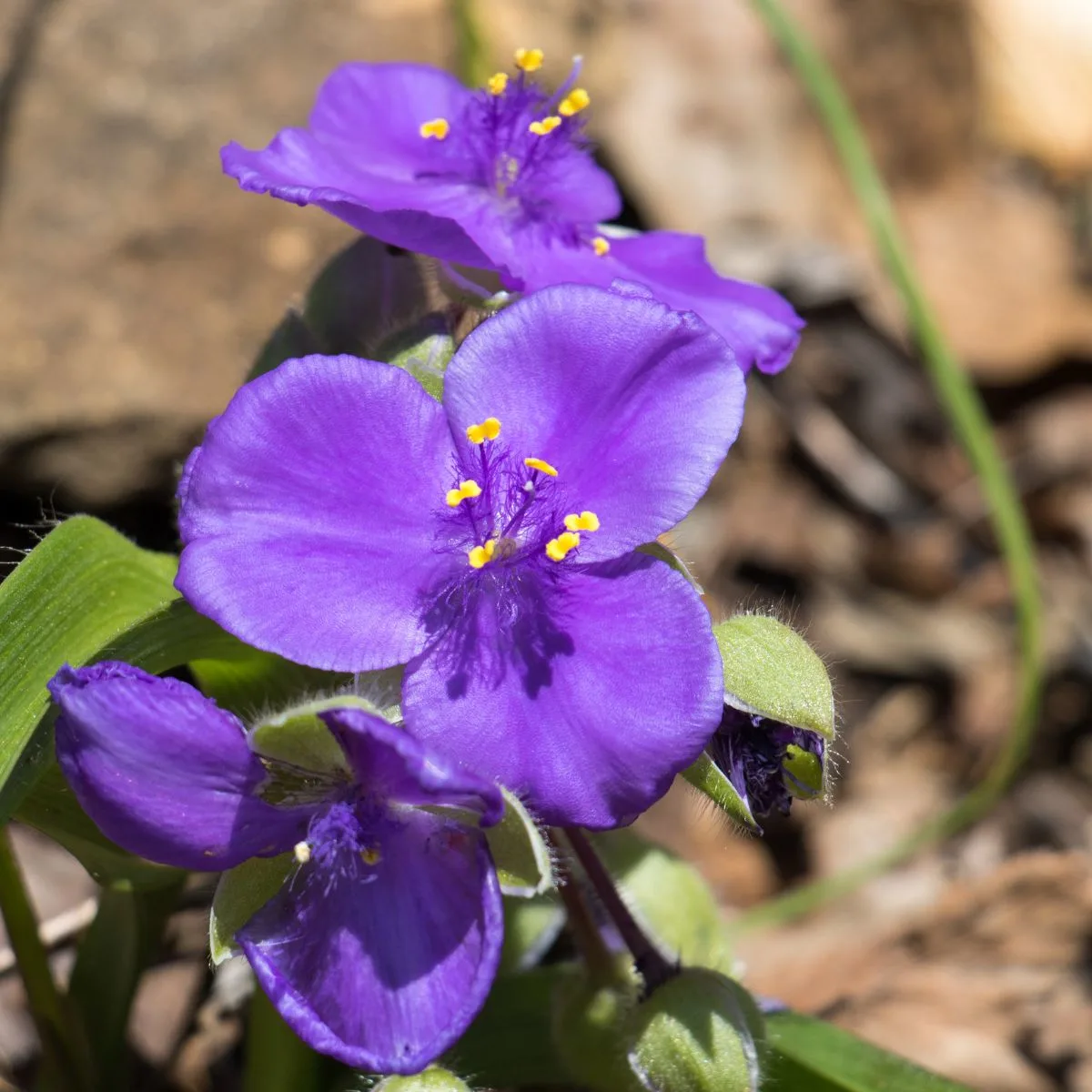
This creeping herb, called tropical spiderwort or Benghal dayflower, has alternate, lilylike leaves that frequently have reddish hairs near the tips. The small, blue flowers are followed by fruit capsules containing two seeds each. The burrowing rhizomes also produce tiny, white, underground flowers.
Foliar spray may be most effective in controlling tropical spiderwort.
Lovely native blue flowers include blue wild indigo (Baptisia australis) and smooth blue aster (Symphyotrichum laeve).
When you learn how to identify and control Georgia’s invasive plants, you can help protect the state’s biodiversity by nurturing native plants (check out Georgia’s native plants) and aiding in the eradication of invasive species. Make your garden a haven for beautiful native flowers, trees, shrubs, and vines, starting with some of the recommendations above!
